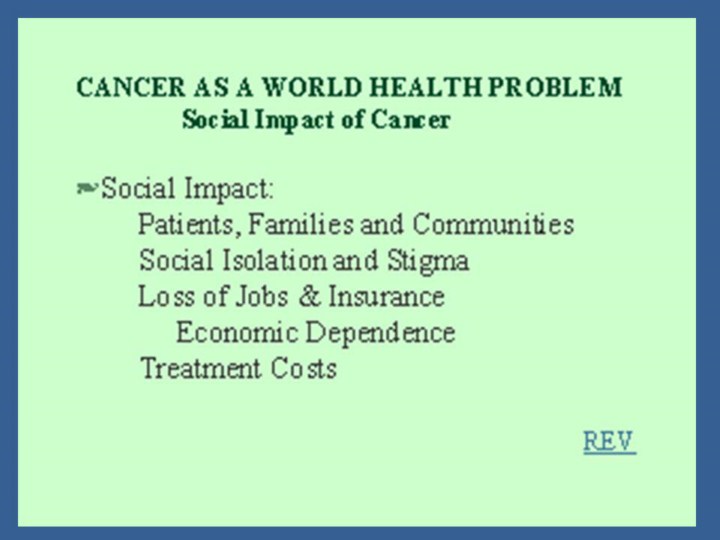Search inside of Supercourse and lectures in HTML and PPT format
 |
 |
front |1 |2 |3 |4 |5 |6 |7 |8 |9 |10 |11 |12 |13 |14 |15 |16 |17 |18 |19 |20 |21 |22 |23 |24 |25 |26 |27 |28 |29 |30 |31 |review |

Cancer
impacts not only the patient, but also his or her family and community. In
North America 1 in 3 individuals born during the last decade will experience
cancer at some point in their lifetime. By the year 2000 the figure will be
one in every two. One in four to one in five North Americans will die of
cancer. Thus most individuals in North America have some experience of the
disease, if not personally, then in a family member, friend or acquaintance. |
|